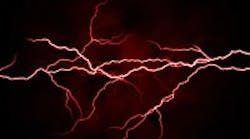Injuries from static electricity continue to plague the worldwide chemical industry. Even if we set aside dust ignitions and lightning strikes and confine ourselves to liquids and gases, the toll is significant. For instance, 12 were killed in Thailand in 2012 during the cleaning of a chemical storage tank at a rubber plant. The problem is nothing new: on p. 292 of the 5th edition of his book "What Went Wrong," safety guru Trevor Kletz wrote of the death of a worker involved in "splash filling" (i.e., pouring onto the surface of a liquid in a vessel) vinyl acetate from an ungrounded steel drum. A fairly recent CP article "Understand the Shocking Truth," noted: "Static electricity is the prime culprit for at least two serious fires or explosions in industry worldwide every day of the year according to the National Fire Protection Association and the U.K.'s Institution of Chemical Engineers."
[pullquote]
A review of 310 accidents by the Japanese chemical industry found that improper grounding caused 70% of all accidents involving static electricity. A 20-year survey of accidents in which static electricity was implicated shows that 30% of these involved hydrogen, natural gas and liquefied petroleum gas — this should be a concern with the rise in gas exploration and the growth in use of hydrogen with dirty, heavy crude.
Common causes of spark generation include: transferring liquids through ungrounded lines and vessels; splash filling; mixing; trapping nonconductive particles or gas in a flowing stream of a nonconductive liquid; purging or jetting a tank or pipe with steam; opening a relief valve or other throttling device; and lastly, discharging an extinguisher containing carbon dioxide or a dry chemical to put out a fire (expanding liquid CO2 forms nonconductive solid particles).
Because improper grounding is the biggest source of these accidents, let's start there. Previous incidents teach us to watch out for a number of potential grounding problems: 1) ungrounded plastic hose; 2) use of nonconductive pipe dope or gaskets; 3) nonconductive bearing grease; 4) paint, dirt or oil preventing grounding clamps from working effectively; 5) use of spring-loaded grounding clamps instead of screw-type C clamps; 6) unbonded (ungrounded) flanges and nozzles; 7) an inadequate or compromised grounding field; 8) use of steel tools, which can rust, instead of bronze or bronze-clad ones; 9) failure to resistance-test, inspect and repair grounding; 10) clothing and other items made of materials such as leather or nylon that can collect or generate a static charge; 11) environmental conditions — ionization increases risk, humidity neutralizes it; and 12) splash filling, which is the most common problem.
A simple conductive strap can ground hoses. Failure of grounding fields is more common than you'd think — recent construction can make a mess of once reliable fields; also, conductivity can vary from season to season. To eliminate static risk, test the hose, the field, clothes, greases and other items for electrical resistance. When I worked with rocket propellants, we only used bronze tools; I see a lot of steel tools when I'm at refineries. Not only clothing is a problem — on p. 103 of his book "Still Going Wrong: Case Histories of Process Plant Disasters and How They Could Have Been Avoided," Trevor Kletz described how replacing a cotton rope used for tank sampling with a nylon one likely caused the static discharge that led to the explosion of a gas oil tank. Cotton naturally traps moisture and thus dissipates static electricity while nylon allows static to build up.
Filling operations always are risky. Besides periodic testing of grounds, check flowing lines prior to use. Discharges should be from the bottom of a vessel. Reduce risk by remembering the fire envelope: keep above the upper explosive limit (UEL) or below the lower explosive limit (LEL). Carl Branan offers some good advice in "Rules of Thumb for Chemical Engineers," p. 270, 2nd edition: LEL is approximately 55% of the stoichiometric air ratio and UEL is 3.5 × LEL. For example, a mole of ethanol requires three moles of O2, which makes up 21% of air; LEL = 0.55 × [1/(1 + 3 × (1/0.21))] = 3.6%; the measured LEL is 3.2%. So, inert a tank with nitrogen or keep it fuel rich. To avoid splash, add a dip leg with siphon breaks (holes) or a grounded conductive rod as a splash plate. Inerting probably is your only option with glass-lined vessels.
Lastly, I'll say a word about purging and jet cleaning. Grounding is crucial here when you're using steam or water, which can generate a charge. Court reports involving a 1973 explosion of a crude-oil supertanker mention "internal lightning." The U.S. Coast Guard suggests stripping flammable vapors or, better yet, creating an "over-rich" mixture in tanks.
Unfortunately, much of what we've learned has come from mortuary engineering.

DIRK WILLARD is a Chemical Processing Contributing Editor. You can e-mail him at [email protected]
Continue Reading
Continue Reading
Latest from Environmental Health & Safety
Latest from Environmental Health & Safety

